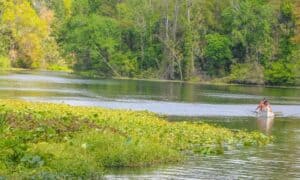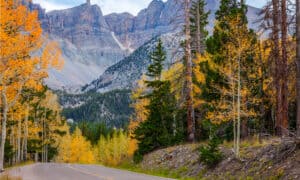Located in the southeastern part of the United States, Alabama is home to several resources, including coal, iron ore, and limestone, combining to make it a major producer of steel in the country. The state is also popular for peanuts, college football, amazing food, drinks, and stunning gulf coast beaches.
Additionally, Alabama has national parks that combine stunning landscapes with the state’s rich history to provide a wealth of exciting adventures, magnificent sights, and educational opportunities. These parks encompass national military parks, national monuments, national preserves, and more. They represent an amazing cross-section of natural attractions and historic sites, ranging from one of the nation’s longest rivers that run nearly entirely on top of a mountain to the site where Andrew Jackson’s army forever terminated the dominance of the Creek Nation.
According to the National Park Service, these sites receive over one million visits each year, with as much as $55 million in economic benefits coming from the tourists.
If you’re searching for beautiful, educating, and adventure-filled locations to visit, these nine national parks in Alabama should be on your list.
1. Horseshoe Bend National Military Park

Horseshoe Bend National Military Park is known for its Native American and military heritage.
©EWY Media/Shutterstock.com
| Horseshoe Bend National Military Park | |
|---|---|
| Size | 2,040 acres |
| Animals to see | Turkey, white-tailed deer, squirrels, toads, turtles, snakes |
| Attraction to see | Smith Mountain Fire Tower, Tallapoosa River |
Located in the state’s central region, Horseshoe Bend National Military Park is known for its Native American and military heritage. The park, near the small Alabama town of Daviston, preserves the Battle of Horseshoe Bend site. The park is used to celebrate the soldiers that battled for liberation in the War of 1812.
In March 1814, a band of Creek warriors was attacked by an army led by General (and future President) Andrew Jackson. Horseshoe Bend was the final battle of the Creek War, which lasted from 1813 to 1814.
Horseshoe Bend National Military Park’s farms, woodlands, waterways, and paths provide excellent possibilities for wildlife observation in their native habitat. Expect to witness wild turkeys, white-tailed deer, squirrels, and a variety of toads, turtles, and snakes when visiting the park. Foxes, armadillos, and coyotes live in the park, but they are an uncommon but fascinating sight because of their nocturnal lifestyle.
The park includes an overlook, descriptive structures, a military tour road, and stunning views along the Tallapoosa River.
2. Little River Canyon National Preserve

Little River Canyon National Preserve protects the natural wonder known as the Grand Canyon of the East.
©Julie rubacha/Shutterstock.com
| Little River Canyon National Preserve | |
|---|---|
| Size | 15,288 acres |
| Animals to see | Gray fox, raccoons, skunks, armadillos, opossum, red fox |
| Attraction to see | Lookout Mountain |
The Little River Canyon National Preserve, located atop Lookout Mountain in Fort Payne, is one of the state’s newest national parks, covering thousands of acres. The preserve protects the natural wonder known as the Grand Canyon of the East, which offers beautiful views of mountain landscapes, year-round waterfalls, uncommon plants and animals, and a river that individuals should not enter without experience.
The canyon, which has been carved up to 600 feet through the summit of Lookout Mountain over millennia, is a popular spot for trips, tourism, photography, picnics, and other activities.
3. Tuskegee Institute National Historic Site
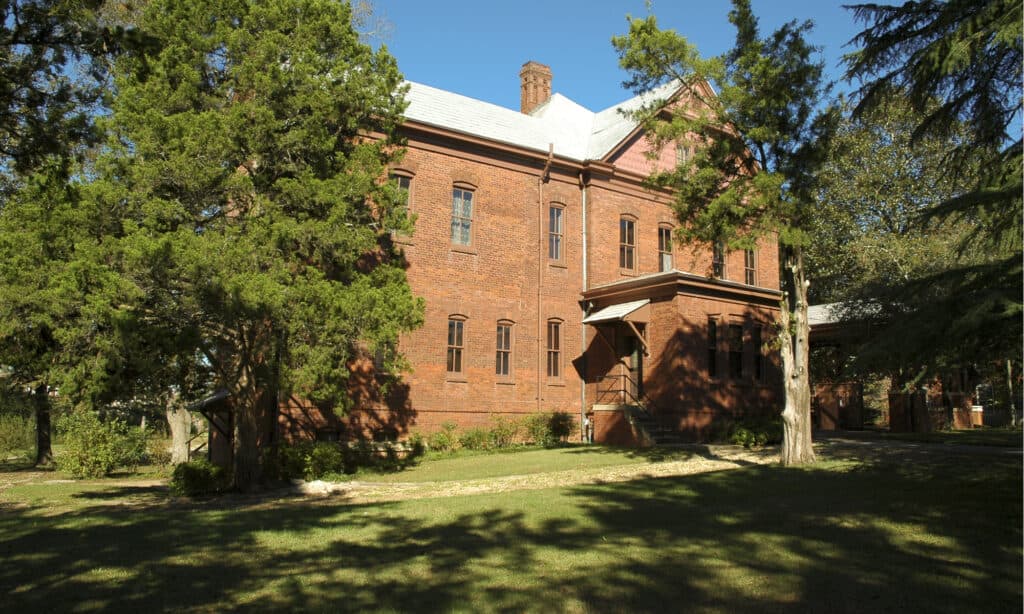
Tuskegee Institute National Historic Site houses the legendary Tuskegee Institute site and the residence of Booker T. Washington.
©Jeffrey M. Frank/Shutterstock.com
| Tuskegee Institute National Historic Site | |
|---|---|
| Size | 58 acres |
| Animal to see | – |
| Attraction to see | The George Washington Carver Museum, The Oaks |
In the city of Tuskegee, remarkable cultural history was made at two national park locations. In the years after slavery was abolished, men like Booker T. Washington and Dr. George Washington Carver worked at the Tuskegee Institute National Historic Site to help African Americans find new identities and jobs.
The George Washington Carver Museum is located on the grounds, and it honors the scientist’s outstanding attention to the advancement of numerous goods based on native plants and agricultural commodities. The park also houses the legendary Tuskegee Institute site and the residence of Booker T. Washington.
4. Tuskegee Airmen National Historic Site
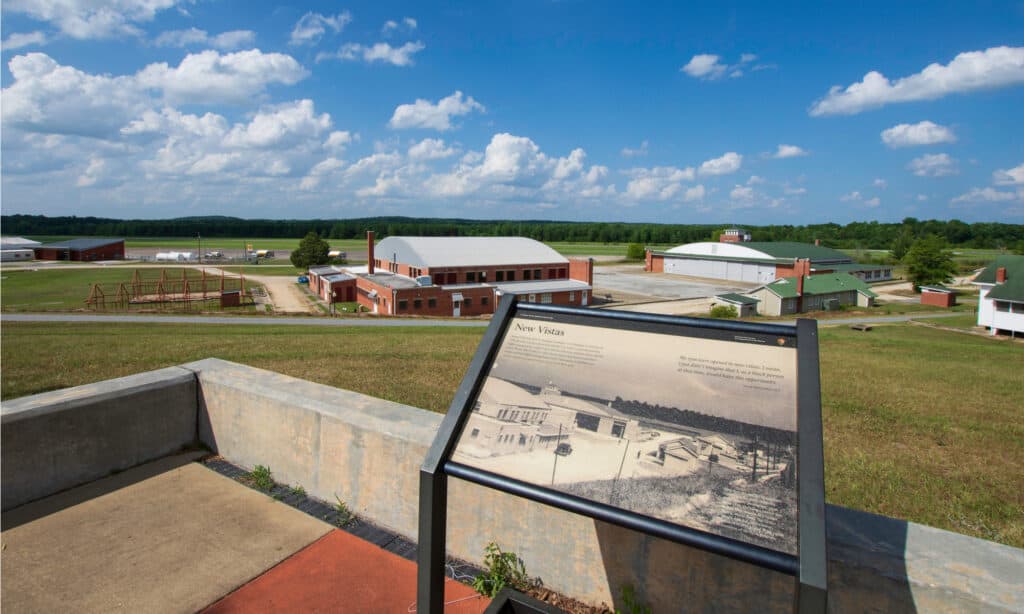
Tuskegee Airmen National Historic Site sustains the airfield where the famous Tuskegee Airmen received training during WWII.
©JNix/Shutterstock.com
| Tuskegee Airmen National Historic Site | |
|---|---|
| Size | 90 acres |
| Animal to see | – |
| Attraction to see | Commodore Museum |
Tuskegee Airmen National Historic Site is located in East Central Alabama. It sustains the airfield where the famous Tuskegee Airmen received training during WWII.
The Tuskegee Airmen were the first African-American fighter pilots in the United States, and they were among the war’s most successful. Over 1,000 soldiers received training here, paving the stage for full African-American integration into the US military.
5. Birmingham Civil Rights National Monument

Birmingham Civil Rights National Monument covers 18.25 acres of land.
©Michael Gordon/Shutterstock.com
| Birmingham Civil Rights National Monument | |
|---|---|
| Size | 18.25 acres |
| Animal to see | – |
| Attraction to see | A.G Gaston Motel |
Birmingham Civil Rights National Monument is a park that is still under construction. You can visit the amazing statues in Birmingham, Alabama, and take a civil rights walk. The National Park Service is restoring the A.G. Gaston Motel to use as a visitor center and interpretive facility in the future.
6. Russell Cave National Monument

Russell Cave National Monument is home to American robins, scarlet tanagers, nuthatches, northern cardinals, and finches.
©Zack Frank/Shutterstock.com
| Russell Cave National Monument | |
|---|---|
| Size | 310 acres |
| Animals to see | American Robins, Scarlet tanagers, nuthatches, Northern cardinals, finches, Eastern bluebirds, warblers |
| Attraction to see | Russell Cave Museum, Russell Cave Nature Trail |
Russell Cave National Monument, located in the far northeast part of the state, is a cave shelter that Native Americans have used for over 10,000 years. A lot of claims point to the fact that the cave is the earliest cave shelter site in the United States, based on an archeological study.
The cave is thought to have been used by Native American hunters and their relatives from around 6500 B.C. to around 1650 A.D. The memorial can be found near Bridgeport. You can enter the cave complex by walking along a walkway. You can also observe how the park service protects the cave today and where part of it was excavated in the past.
7. Freedom Riders National Monument

Freedom Riders National Monument covers 7.83 acres of land.
©Ser Amantio di Nicolao / Creative Commons – License
| Freedom Riders National Monument | |
|---|---|
| Size | 7.83 acres |
| Animal to see | – |
| Attraction to see | 1961 bus burning site |
Freedom Riders National Monument is still under construction. The visitor center is currently closed, but you can still access the site and observe interpretative displays, including a Greyhound Bus mural.
The website was intended to recount the narrative of the Freedom Riders and what transpired to them in 1961. On May 14, 1961, at the Anniston Greyhound Bus Station, a gang of segregationists, including members of the Ku Klux Klan, ambushed a bus transporting black and white freedom riders.
8. Selma To Montgomery National Historic Trail
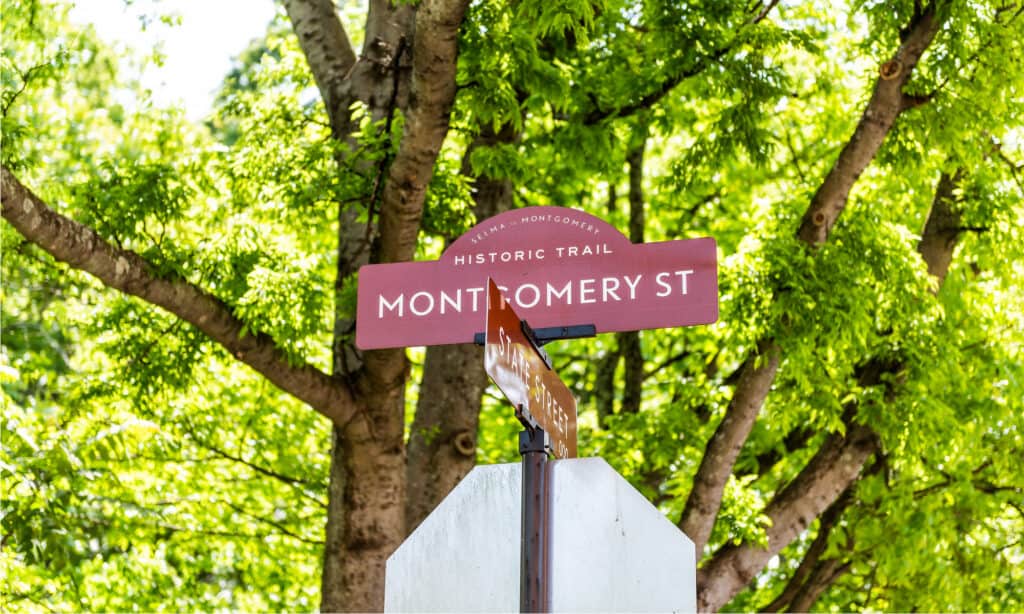
The Selma to Montgomery National Historic Trail in Alabama commemorates the marchers’ path from March 21 to March 25, 1965.
©Kristi Blokhin/Shutterstock.com
| Selma To Montgomery National Historic Trail | |
|---|---|
| Size | 54 miles |
| Animal to see | – |
| Attraction to see | Tent City, Rosa Parks Museum |
The Selma to Montgomery National Historic Trail in Alabama commemorates the marchers’ path from March 21 to March 25, 1965, when they participated in the Voting Rights March.
Starting from Selma, you are urged to go back nearly 50 years from today and become an observer of history along the Trail. Learn about the historic 1965 voting rights marches at an informative center and a voting rights museum.
Follow U.S. Hwy. 80 to a location known as Tent City in Lowndes County, crossing the iconic Edmund Pettus Bridge and following in the footsteps of foot soldiers. Carry on to Montgomery, pausing along the way at the City of St. Jude, the Rosa Parks Museum, and other attractions before emerging at the Alabama State Capitol.
You can learn much more about the path by going to one of two visitor centers. One is close to the Edmund Pettus Bridge in Selma, while the other is in Hayneville.
9. Natchez Trace Parkway

Natchez Trace Parkway is a scenic 444-mile trip that connects Natchez, Mississippi, Nashville, and Tennessee.
©Joseph Sohm/Shutterstock.com
| Natchez Trace Parkway | |
|---|---|
| Size | 52,302 acres |
| Animal to see | Deer, foxes, coyotes, armadillos |
| Attraction to see | Garrison Creek, Gordon House, Birdsong Hollow, Double Arch Bridge |
Natchez Trace Parkway is a scenic 444-mile trip that connects Natchez, Mississippi, Nashville, and Tennessee. The ancient path has witnessed 10,000 years of North American history and marks the Old Southwest’s most important roadway.
Visitors can enjoy a diverse range of wildlife, beautiful waterfalls, fascinating hikes, and historic sites along this National Scenic Byway and All-American Road. The path is especially beautiful in the autumn when the hardwoods that line the route burst with color. Tourists visit from around the country to take this special trip and see the Parkway’s natural and historical attractions.
The Natchez Parkway also travels through Alabama’s northwest region, completing the state’s intriguing array of national park locations.
The photo featured at the top of this post is © Joseph Sohm/Shutterstock.com
Thank you for reading! Have some feedback for us? Contact the AZ Animals editorial team.




